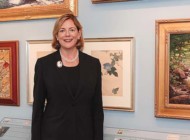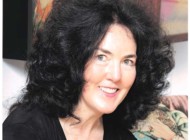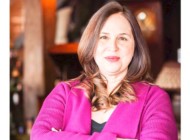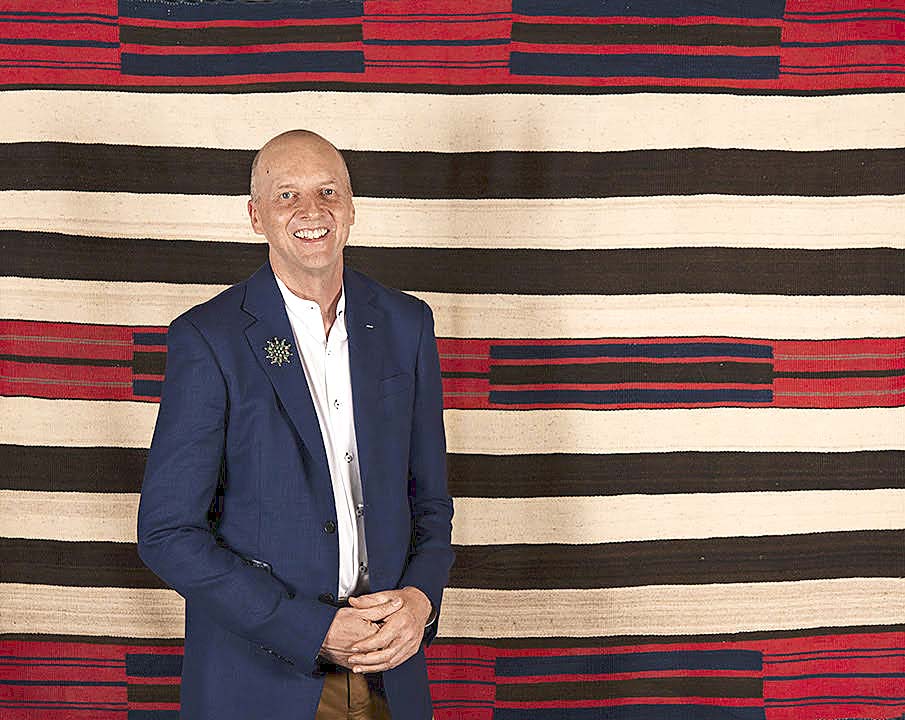
This past July, Morphy Auctions announced Kim Martindale as its chief event consultant. Martindale, a 50-year veteran of Western and Native American art-show production, has been brought on to help with Morphy’s Las Vegas Old West Show & Auction and Santa Fe Old West Show & Auction, among other responsibilities. When Antiques and The Arts Weekly heard about Martindale’s new role, we reached out to learn a little more about his past and his goals for the future with Morphy.
Congratulations are in order for your appointment to event consultant at Morphy’s. With 50 years of experience in the industry, what drew you to this role in particular?
I’d like to answer this in two parts; there is a misconception out there that I purchased these shows from Morphy’s. I would like to clarify that I’m a consultant working with Morphy’s and have not purchased the shows.
After several conversations with Morphy’s, Dan [Morphy, president] and other people that work there, like Cheryl [Goyda], and working with them for several years just doing the technical side of the show, I arrived at the conclusion that “Here’s a group that was really willing and wanting to do more with shows and had a budget to develop shows.” I felt that my 50 years of experience would be valuable in assisting them. I also think that there are not nearly enough shows in the Native American/Western art world; there could be 20 more, 30 more of these kinds of shows, and it still wouldn’t be that crowded of a field.
Morphy’s is mainly an auction house but entered the show business when they purchased the Las Vegas Antique Arms show in 2019. In fact, we’ve created a new logo for the show division, which advertises Morphy Shows rather than Morphy Auctions. They are really taking that division of their business seriously. And therefore, I’m excited and glad to be working with them.
The addition of the Old West/Native American shows came with the acquisition of Brian Lebel’s Old West Events. I think they were, to be bluntly honest, struggling with the culture of the Old West Events. The show element was not really going in the right direction, especially as far as the Native American and Western side. Those shows needed some new direction and some movement.
Morphy’s has a built-in advantage of marketing dollars from conducting auctions and shows, which I as a show producer don’t have when I personally produce a show. I’m excited that they have a budget so that we can market things via their auction through their platform, which has tens of thousands of followers, and I can use my platform that has similar reach. I believe we can really build back something that is valid and important for the Native American and Western art community and give them a couple of new, strong platforms.
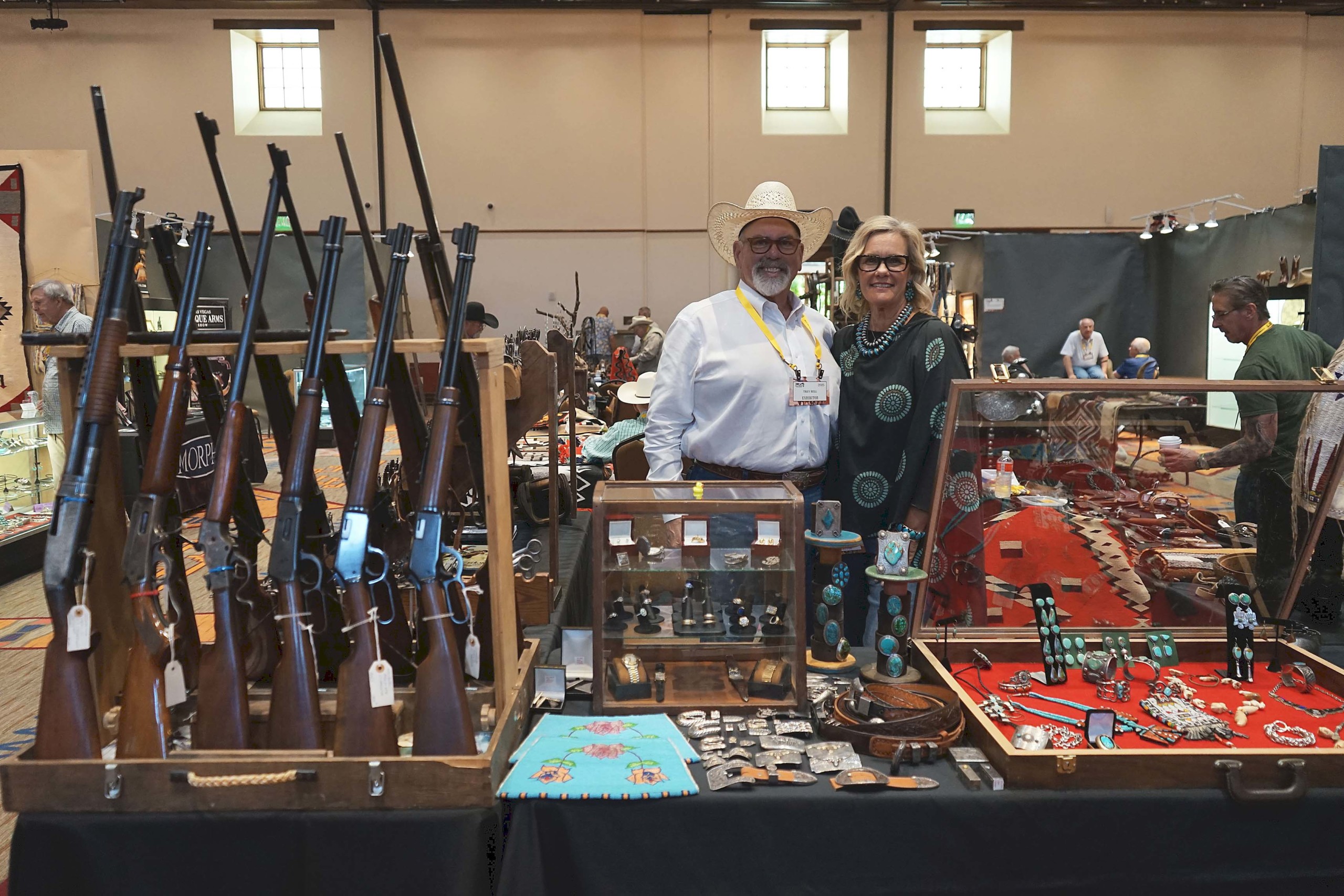
Texas jewelry craftsman Trey Bell at the 2025 Old West Show & Auction. Photo courtesy Morphy’s.
How did you get into this field of Native American and Western art? When did that passion start?
I think, at birth. Six months after I was born, we moved from California to Canada, where my parents were originally from. My mom was a Skylark leader in the city of Regina, Saskatchewan, and they would go to the museum, this group — like Girl Scouts or Brownies here in the US — and my mom would take me with her. There was this diorama there of Blackfoot Indians trading furs, and they would put me in front of it to see my reaction. I was always smiling and so excited. So certainly, I had some reaction at an early age.
As soon as I could walk and pick things up and was aware of what an arrowhead was, any stone that had a point on it became an arrowhead in my mind. I would show these stones to people and go, “Look at my arrowhead.” And they would play along with me and go, “Oh, that’s so nice.” By the time I was six or seven, I named my bedroom the “Kimrayrium Museum,” because my middle name’s Ray and then “rare.”
My parents were supportive of it! My mom would take me around to antique shops and when I was around 12 or 13, we moved back to California and I met Don Bennett, whom I started the Whitehawk Show with when I was 16. I started traveling to these shows, either with Don, or I would get on a bus and go someplace for an Indian show, like Monterey, or Los Angeles or San Francisco. It really became my life and where my passion was.
I think that Native American culture and the people that made this art, many of whom were master artists, I would put them up with what we think of as the greatest artists. Usually those lists are Western oriented, right? But I think that in all these cultures, there were artists equal to those. And I think if you find those pieces, whether it be a katsina carver, a weaver or a potter, they are a master and they should be elevated to the same level.
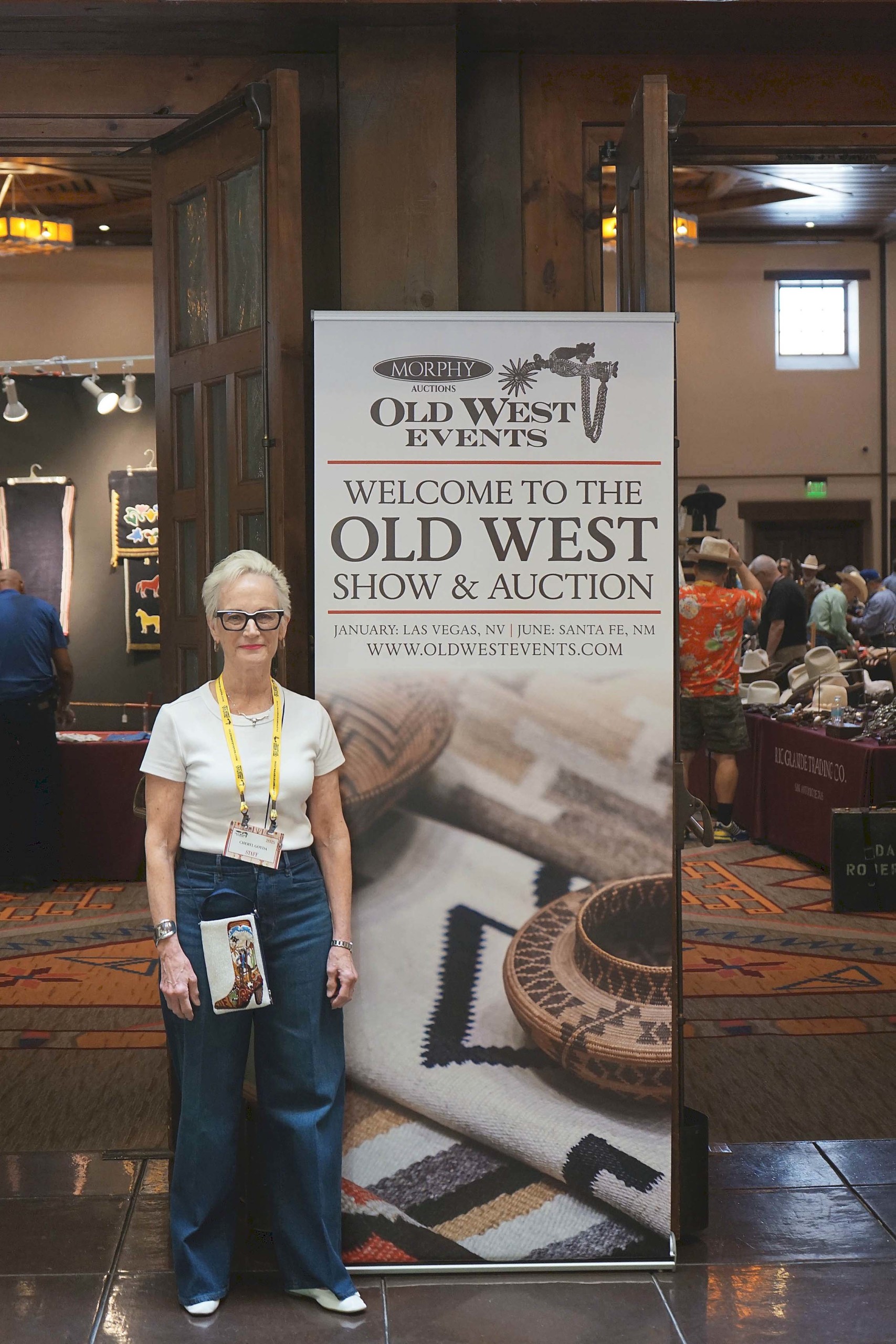
Cheryl Goyda, Morphy’s firearms operations manager, at the 2025 Old West Show & Auction. Photo courtesy Morphy’s.
You have produced some of the country’s most prestigious specialty shows. What is the secret to a successful and long-lasting show?
Passion and being willing to work long hours because it is your passion. It is also really important to understand things from the exhibitor’s standpoint. What they’re looking for, what they need, what they respond to and how to get them excited about something, so they’ll share it are necessary elements for a successful show. Because, really, no one individual can make a real difference. It’s all about banding a group together that is really excited about something and having them all help spread the word.
There are three groups that you need to focus on in show communities: the dealer or the exhibitor community, the collector/art community and the community itself where an event is taking place. I think that so often, we as show promoters struggle insofar as we can’t live in every community where we hold our events. But I think it’s always beneficial to either live in that community, at least for a while, or spend time in that community, and really get to know it or work with the museums in the surrounding area. Then get to know the city, the powers that be, like the mayor’s office or a city counselor, because you are bringing something of significance to the area. If the city can feel pride in what you’re doing, then there is a lot more exposure and joint effort to ensure a successful event.
Because people are always looking for something to do, it’s just about making them aware of it, and putting it on their radar in a way that creates an excitement that they want to be part of. I think that’s why the LA Art Show eventually had 70,000 people attending.
In Morphy’s press release announcing your new role, you explained that “there is nothing like seeing art in person.” Can you name a few truly memorable pieces that you have seen or handled at any of the shows you’ve run during your career?
I’m sitting in a living room right now that has some of those pieces. I have a large collection, and I love to collect and I love this material.
There are several pieces that I’m looking at right now that I probably wouldn’t have bought unless I had seen them in person. What I really meant by that statement was that I don’t think that, even with a lot of knowledge, you can truly get the feel for any piece just from a photo or a video or looking at it on your computer, unless it’s digital art, right?
I think that with most tangible art there is nothing like the tactile aspect of it. I will look at baskets, maybe when I’m looking to bid on something or a friend will send me something and ask about its value, and I can take out a tape measurer — I have 40 baskets right in this room that I can measure and kind of go, “Okay, that’s the size of it.” However, it’s nothing like when you see it in person, even though it may be the same size. For example, the strength of a piece by the stitch count and by the design can seem larger than it is or can seem smaller in person.
I implore everybody to see art and to enjoy that process. If you can go to a show or go to a museum and see things in person, I think it opens up a whole other world.
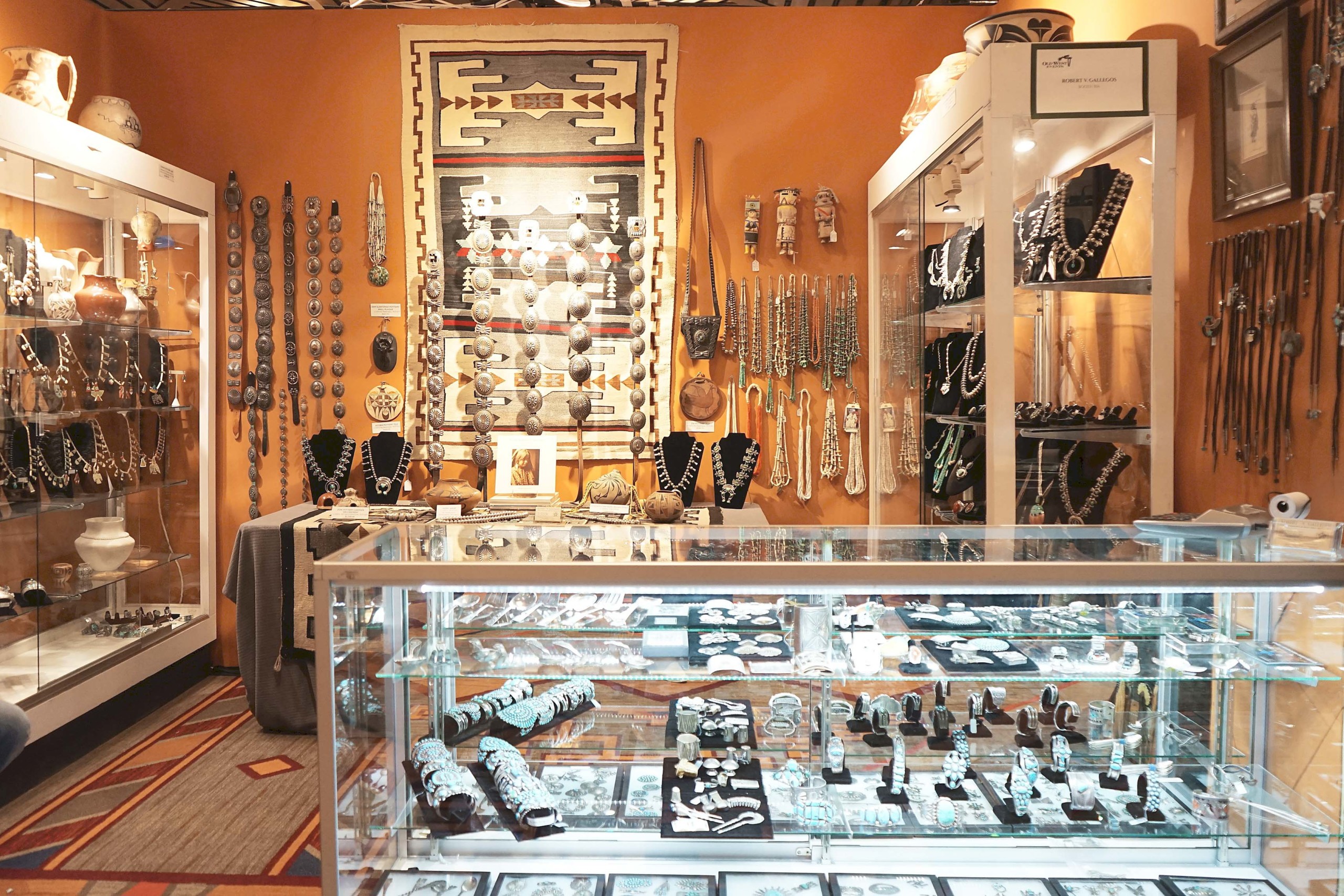
The booth of Robert V. Gallegos, Albuquerque, N.M., at the 2025 Old West Show & Auction. Photo courtesy Morphy’s.
What are some of your plans for further developing Morphy’s Old West Show & Auction series?
My goal is to work on gaining interest through community outreach and special exhibitions, trying to get exhibitors more engaged in the process, spreading the word and boosting social media presence. Even though I am a believer in seeing things in person, social media is a new and vital part of our world. It’s important to get people excited through it and to draw them in.
I just spent a week in Denver, Penn., with Morphy’s going through these objectives. We have come up with around 15 things that we are going to be announcing soon; we are also looking at additional venues, which I can’t talk about in more detail at this point. In the new year, hopefully in January, we will be making some announcements about that.
Another thing that is super exciting is working with communities and/or museums, potentially in areas that I think the Native American and the Old West world are really asking for experiences through generating events in communities that will create great excitement. So far, the institutions we have been talking to are excited about being engaged with us.
I think that making shows an important part of Morphy’s business plan is crucial. One of the critiques I had of the firm going into this process was that when you looked at an ad for one of their auctions, they would put a byline on the bottom of the ad that would list their upcoming shows. They would not have a photo, and there was no real logo, it was more like some lines of text. I explained that people rarely read through an entire ad, so we need to make a separate ad more about both the auction and the shows. Even though this is coming out of the budget for their auctions, they have been willing to do that, so we have created some new ads and are working on a new logo and renaming the show something like “The Native American Art and Old West Show,” instead of just “The Old West Event.” I think that it is important that both of those names are in the show because it really puts out that bigger message that both are included.
That’s why I was excited that Morphy’s is creating this whole division, Morphy Shows, showcasing how important the show element is. I think that people had a feeling that the auction was the main focus and the shows are just kind of an add-on, and now I know from talking to Dan and Cheryl that that is not what they want. They want to be partners with the people that are in the show because together we are all part of this community. You have to feel like you are a part of something rather than just being there and I think that the show team at Morphy’s really wants to do that. It’s certainly what I want to do, and I believe I have tried to do it all my life.
—Kiersten Busch

